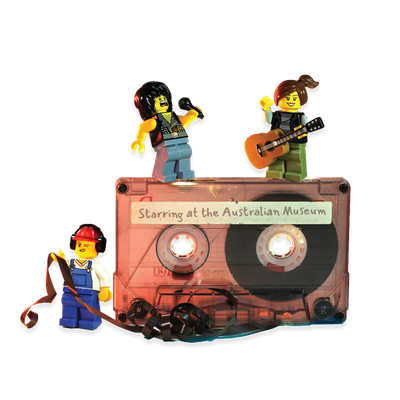Your search returned 39 results
By Page Type
By Tag
- All
- fish (966)
- blog (698)
- fishes of sydney harbour (400)
- First Nations (293)
- Blog (236)
- AMRI (169)
- archives (165)
- Aboriginal and Torres Strait Islander (135)
- Eureka Prizes (131)
- insect (126)
- Ichthyology (125)
- geoscience (109)
- minerals (102)
- climate change (98)
- podcast (94)
- Fish (91)
- Anthropology (89)
- International collections (80)
- Minerals Gallery (78)
- wildlife of sydney (78)
- Labridae (77)
- frog (73)
- gemstone (70)
- history (63)
- photography (63)
- staff (61)
- Mollusca (60)
- gem (59)
- Birds (58)
- education (57)
- Gems (56)
- Indonesia (56)
- AMplify (54)
- shark (54)
- people (53)
- exhibition (52)
- earth sciences (50)
- past exhibitions (50)
- Gobiidae (48)
- Pomacentridae (45)
- sustainability (45)
- Serranidae (44)
- science (43)
- lifelong learning (42)
- Earth and Environmental Science (41)
- Syngnathidae (41)
- Ancient Egypt (40)
- Bali (40)
- bird (40)
- dangerous australians (40)
-
What do true bugs look like?
https://australian.museum/learn/species-identification/ask-an-expert/what-do-true-bugs-look-like/True bugs belong to the Order Hemiptera, suborder Heteroptera. True bugs include bugs such as plant bugs, stink bugs, water bugs and shield bugs.
-
What do plant hoppers and cicadas look like?
https://australian.museum/learn/species-identification/ask-an-expert/what-do-plant-hoppers-and-cicadas-look-like/Plant hoppers, along with cicadas, belong to the Order Hemiptera, suborder Auchenorrhyncha.
-
What do springtails look like?
https://australian.museum/learn/species-identification/ask-an-expert/what-do-springtails-look-like/Springtails belong to the Order Collembola.
-
What do butterflies, moths and skippers look like?
https://australian.museum/learn/species-identification/ask-an-expert/what-do-butterflies-moths-and-skippers-look-like/Butterflies, moths and skippers all belong to the Order Lepidoptera.
-
What do dragonflies and damselflies look like?
https://australian.museum/learn/species-identification/ask-an-expert/what-do-dragonflies-and-damselflies-look-like/Dragonflies and damselflies belong to the Order Odonata.
-
What do psocids look like?
https://australian.museum/learn/species-identification/ask-an-expert/what-do-psocids-look-like/Psocids, sometimes known as 'booklice, belong to the Order Order Psocoptera.
-
What do sawflies look like?
https://australian.museum/learn/species-identification/ask-an-expert/what-do-sawflies-look-like/Sawflies belong to the Sub-order Symphyta in the Order Hymenoptera.
-
Identification of stoneflies
https://australian.museum/learn/species-identification/ask-an-expert/what-do-stoneflies-look-like/Stoneflies are found close to creeks or rivers generally on adjacent vegetation, or behind bark and logs.
-
What do stylops look like?
https://australian.museum/learn/species-identification/ask-an-expert/what-do-stylops-look-like/Stylops belong to the Order Strepsiptera.
-
Identification of termites
https://australian.museum/learn/species-identification/ask-an-expert/what-do-termites-look-like/Termites belong to the Order Isoptera.
-
Find out more
Tails from the Coasts
Special exhibition
On now![]()
-
Find out more
Burra
Permanent kids learning space
10am - 4.30pm![]()
-
Discover more
RELICS
Special Exhibition
Opens 16 August 2025![]()
-
Discover more
Minerals
Permanent exhibition
Open daily![]()





